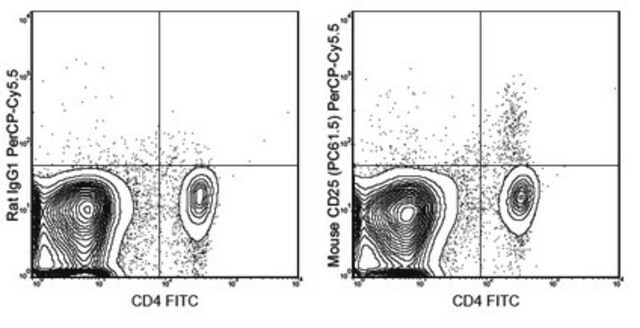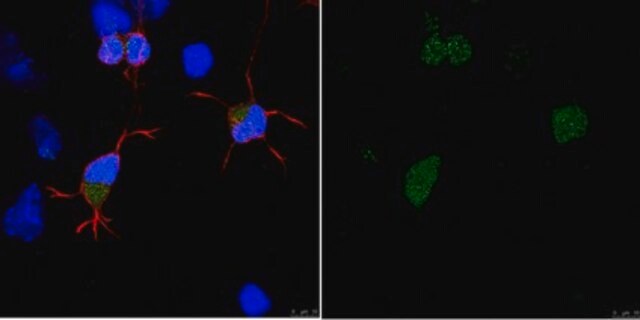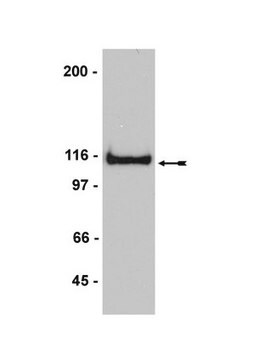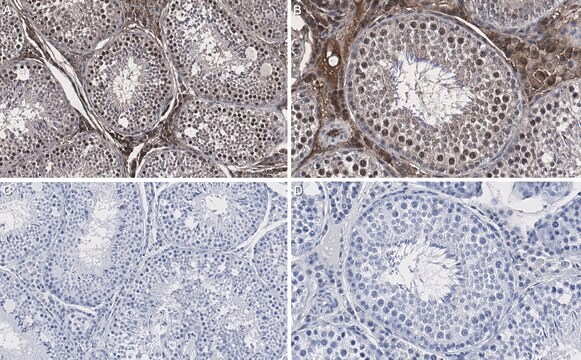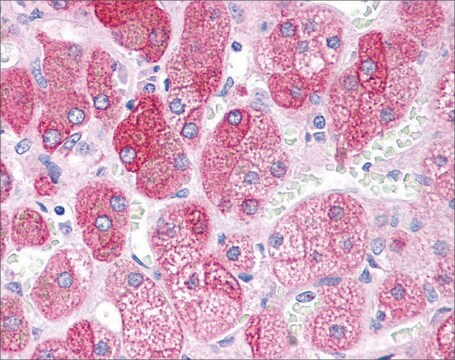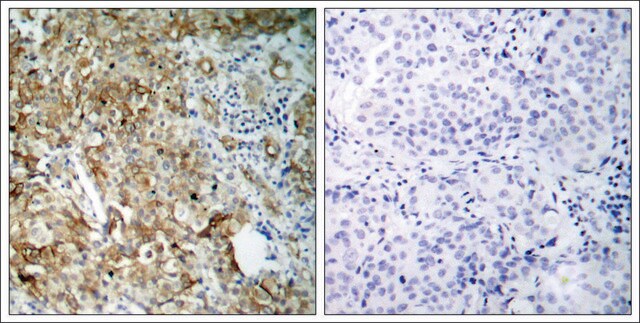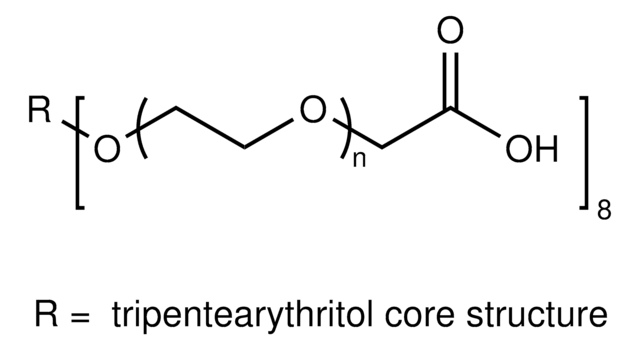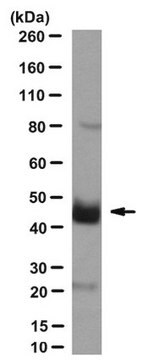MABN2297
Anti-Amyloid Precursor Protein (APP) Antibody
rat monoclonal, 7H6
Sinónimos:
Amyloid beta A4 protein, ABPP, APPI, Alzheimer disease amyloid protein, Amyloid precursor protein, Beta-amyloid precursor protein, Cerebral vascular amyloid peptide, CVAP, PreA4, Protease nexin-II, PN-II
About This Item
Productos recomendados
Nombre del producto
Anti-APP Antibody, clone 7H6, clone 7H6, from rat
origen biológico
rat
Nivel de calidad
forma del anticuerpo
purified antibody
tipo de anticuerpo
primary antibodies
clon
7H6, monoclonal
reactividad de especies
human
técnicas
ELISA: suitable
flow cytometry: suitable
immunocytochemistry: suitable
immunoprecipitation (IP): suitable
western blot: suitable
isotipo
IgG1κ
Nº de acceso NCBI
Nº de acceso UniProt
Condiciones de envío
ambient
modificación del objetivo postraduccional
unmodified
Información sobre el gen
human ... APP(351)
Descripción general
Especificidad
Inmunógeno
Aplicación
Western Blotting Analysis: A representative lot detected APP in Western Blotting applications (Hoefling, C., et. al. (2016). Aging Cell. 15(5):953-63).
Flow Cytometry Analysis: A representative lot detected APP in Flow Cytometry applications (Hoefling, C., et. al. (2016). Aging Cell. 15(5):953-63).
Western Blotting Analysis: A 1:10 dilution from a representative lot detected App in WT and APP knockdown HEK293T cells (Courtesy of Dr. med. Peer-Hendrik Kuhn, Ph.D., Institut fur Allgemeine Pathologie und Pathologische Anatomie, Technische Universität München, Munich, Germany).
Immunoprecipitation Analysis: A representative lot detected APP in Immunoprecipitation applications (Hoefling, C., et. al. (2016). Aging Cell. 15(5):953-63).
ELISA Analysis: A representative lot detected APP in ELISA applications (Hoefling, C., et. al. (2016). Aging Cell. 15(5):953-63).
Immunocytochemistry Analysis: A 1:10 dilution from a representative lot detected APP in HEK293T either lentivirally transduced with APP shRNA-1 or APP shRNA-2 both coexpressing GFP as a reporter (Courtesy of Dr. med. Peer-Hendrik Kuhn, Ph.D., Institut fur Allgemeine Pathologie und Pathologische Anatomie, Technische Universität München, Munich, Germany).
Immunocytochemistry Analysis: A representative lot detected APP in Immunocytochemistry applications (Hoefling, C., et. al. (2016). Aging Cell. 15(5):953-63).
Neuroscience
Calidad
Western Blotting Analysis: 1 µg/mL of this antibody detected APP in 10 µg of HEK293 cell lysate.
Descripción de destino
Forma física
Almacenamiento y estabilidad
Otras notas
Cláusula de descargo de responsabilidad
¿No encuentra el producto adecuado?
Pruebe nuestro Herramienta de selección de productos.
Opcional
Código de clase de almacenamiento
12 - Non Combustible Liquids
Clase de riesgo para el agua (WGK)
WGK 1
Certificados de análisis (COA)
Busque Certificados de análisis (COA) introduciendo el número de lote del producto. Los números de lote se encuentran en la etiqueta del producto después de las palabras «Lot» o «Batch»
¿Ya tiene este producto?
Encuentre la documentación para los productos que ha comprado recientemente en la Biblioteca de documentos.
Nuestro equipo de científicos tiene experiencia en todas las áreas de investigación: Ciencias de la vida, Ciencia de los materiales, Síntesis química, Cromatografía, Analítica y muchas otras.
Póngase en contacto con el Servicio técnico
